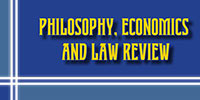Cameron BATMANGHLICH
Ph.D. (Economics), Professor (Varna University of Management, Varna), Bulgaria
ORCID iD: orcid.org/0000-0003-2050-4946
cameron.batmanghlich@gmail.com
Volodymyr BOBYL
D.Sc. in Economics, Professor (Dnipro National University of Railway Transport named after Academician V. Lazaryan), Ukraine
ORCID iD: orcid.org/0000-0002-7306-3905
vladimirbobyl2@gmail.com
Larysa MARTSENIUK
D.Sc. in Economics, Associate Professor (Dnipro National University of Railway Transport named after Academician V. Lazaryan), Ukraine
ORCID iD: orcid.org/0000-0003-4121-8826
rwinform1@ukr.net
UDC 336.71:[005.52:055.334]
DOI 10.31733/2786-491X-2021-66-75
Keywords: P2P lending, risk assessment, crisis, the probability of default, investors
Abstract. The article is devoted to definition content, disadvantages, advantages and features of P2P (person to person) lending under ordinary circumstances and in times of crisis. The main problem of P2P lending in the period of significant changes in environmental factors is a high risk of non-repayment of credit. Recommendations to reduce the risk of investors through the use of technology in neural models of individual credit risk assessment (scoring) an individual borrower. In actual credit history defined performance using qualitative and quantitative indicators to determine the level of solvency of borrowers individual. Interrelation researched the credit risk of the borrower-class individual, the interest rate (price) and maximum size P2P loan. Recommended consider the impact of environmental factors in the decision to grant consumer loans to individuals P2P.
References
- Arya, S., Eckel, C., & Wichman, C. (2013). Anatomy of the credit score. Journal of Economic Behavior & Organization, 95, 175-185.
- Bobyl, V. V. (2014). The use of a neuron-schetchering scoring model in assessing the borrowerʼs credit risk. Finansy ta kredyt. Finance and credit, 32(608), 18-25 (in Ukrainian).
- Guo, Y., Zhou, W., Luo, C., Liu, C. & Xiong, H. (2016). Instance- based credit risk assessment for investment decisions in P2P lending. European Journal of Operational Research, 249(2), 417-426.
- I-Cheng, Y. & Che-hui, L. (2009). The comparisons of data mining techniques for the predictive accuracy of probability of default of credit card clients. Expert Syst. Appl., 36(2), 2473-2480.
- National Bank initiates settlement of P2P lending. The official website of the NBU. http://www.bank.gov.ua/control/uk/publish/article?art_ id=30375585 (in Ukrainian).
- Serrano-Cinca, С. & Gutiérrez-Nieto. B. (2016). The use of profit scoring as an alternative to credit scoring systems in peer-to-peer (P2P) lending. Decision Support Systems, 89, 113-122.
- Serrano-Cinca, С., Gutiérrez-Nieto, B. & Nydia, M. Reyes. (2016). A social and environmental approach to microfinance credit scoring. Journal of Cleaner Production, 112, 4(20). 3504-3513.
- Stanley, M. (2015). Can P2P lending reinvent banking? https://www.morganstanley.com/ideas/p2p-marketplace-lending.
- Zhang, Y., Jia, H., Diao, Y., Hai, M. & Li, H. (2016). Research on Credit Scoring by Fusing Social Media Information in Online Peer-to-Peer Lending. Procedia Computer Science, 91, 168-174.
